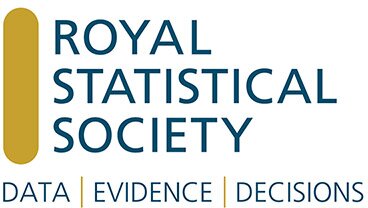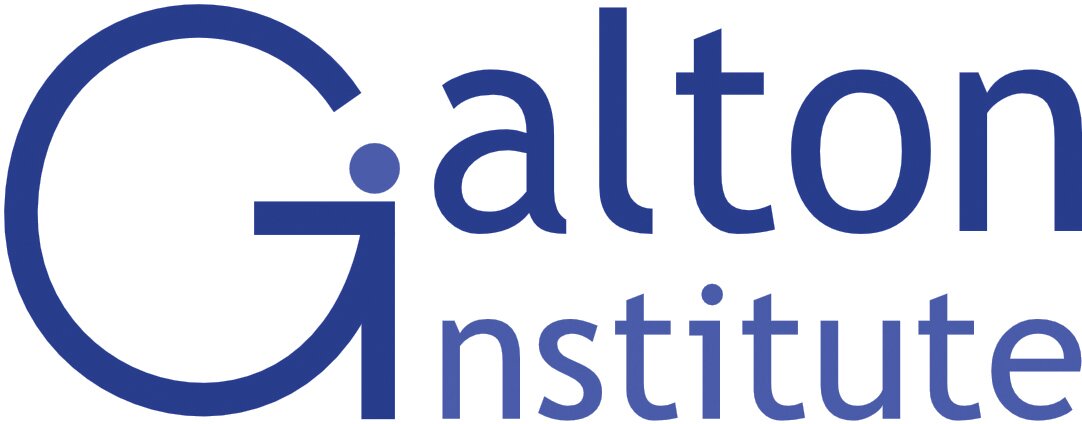Mastering the Scholarly Voice: Writing Techniques to Enhance Your Probability and Statistics Research Papers
Probability and statistics are the backbone of many scientific disciplines, underpinning theories with concrete evidence and transforming data into meaningful insights. However, presenting these insights requires more than analytical skills; it necessitates a scholarly voice communicating findings with clarity, coherence, and authority. This article aims to guide researchers in honing their writing techniques, ensuring that their papers contribute new ideas, engage and resonate with their audience.
Understanding the Scholarly Voice
The scholarly voice is not about the pomp of highfalutin language; it is the tone of expertise and credibility. This voice recognizes its audience as educated, critical, and knowledgeable peers. It is consistent, avoids ambiguity, and speaks with an authority born out of thorough research and understanding. Developing this voice means understanding that every choice, from the structuring of sentences to the selection of terminology, plays a role in conveying confidence, clarity, and respect for the field's body of knowledge.
Clarity and Precision: The Foundation of Scholarly Writing
No matter how groundbreaking, research can only make an impact if understood. The scholarly voice hinges on clarity and precision, making these elements crucial for effective communication.
-
The Importance of Clear Thesis Statements
Every research paper is a journey; the thesis statement is its compass. It succinctly articulates the central point or argument, giving readers a clear expectation of what the paper aims to achieve or prove. With a well-defined thesis statement, readers might get through the vast ocean of data and analysis.
-
Crafting Well-Defined Research Objectives
Research objectives are the stepping stones that lead to the fulfillment of the thesis. They outline the specific aims or goals of the study, offering a roadmap of the analyses and discussions to follow. Clearly stated objectives guide the research process, ensuring that every effort aligns with the paper's goals.
-
Using Precise Language and Terminology
In the realm of probability and statistics, nuances matter. Terms like "correlation" and "causation" have distinct meanings, and confusing them can lead to significant misinterpretations. Thus, it's essential to choose language and terminology judiciously. Avoid vague expressions and always opt for the term that most accurately conveys the intended meaning.
Structuring Your Probability and Statistics Research Paper
The structure acts as the skeletal framework of your research paper, dictating the flow and presentation of your arguments, findings, and insights. A well-structured paper guides the reader smoothly through its contents and accentuates the credibility and thoroughness of the research.
-
Creating an Engaging Abstract
The abstract is often the reader's first interaction with a research paper. This compact summary should encapsulate the essence of your study, providing a brief overview of the objectives, methodology, results, and conclusions. For example, if researching the correlation between smoking and lung cancer, an abstract might concisely mention the sample size, the statistical tests employed, the key findings, and the implications of the results.
-
Organizing Sections Effectively
A logical sequence and clear section demarcation enable readers to easily navigate your research paper. Starting with an introduction that lays out the background and objectives, followed by methods, results, discussion, and conclusion sections, can be an effective approach. Each section should flow into the next, with the content within each section organized logically. For instance, within the methods section, one might detail the sample selection process before elaborating on the statistical tests employed.
-
The Power of Methodology
A robust methodology section is pivotal in establishing the validity and reliability of your research. It's where you detail how you collected your data, the tools and techniques you employed, and the rationale behind your choices. If conducting a study on student performance, specifying whether you used stratified or simple random sampling and explaining your choice lends credibility to your data collection process.
-
Presenting Data and Results with Finesse
Data is the heart of a probability and statistics research paper. However, it's not enough to present data; it should be done with clarity and context. Tables and figures should be labeled accurately. Moreover, the narrative should highlight key findings, not leaving readers to decipher raw data independently. For example, instead of merely tabulating student scores, one might highlight that "70% of students who underwent the revised curriculum scored above the 90th percentile."
Citation Mastery: Navigating the World of References
Proper citation is not just an academic requirement—it's a testament to the integrity of your research and an acknowledgment of the scholars and researchers whose work you build upon.
It begins with selecting the right citation style. Different fields prefer different citation styles. Whether it's APA, MLA, Chicago, or another style, ensure consistency throughout your paper. For instance, if you're following APA style, a book citation might look like: Smith, J. (2020). Statistics in Modern Research. Academic Press.
Another step to citation mastery includes a skillfully integrating of citations. It is needed to ensure that they augment rather than interrupt your narrative. For instance, instead of awkwardly adding a reference in parentheses mid-sentence, one might write, "As Smith (2020) posits, the application of Bayesian statistics has transformed modern research."
It is important to avoid plagiarism pitfalls. Plagiarism, intentional or unintentional, can tarnish a researcher's reputation. Always ensure that you credit original authors and sources. Using plagiarism detection tools and regularly reviewing citation guidelines can safeguard against pitfalls. It's better to over-cite than under-cite.
The Art of Peer Review and Revision
Behind every exemplary research paper lies a rigorous process of review and revision. Embracing critiques and refining one's work is not a sign of inadequacy but of commitment to scholarly excellence.
Before finalizing a paper, seeking feedback from peers, mentors, or experts in the field is invaluable. They can offer fresh perspectives, catch overlooked errors, and suggest areas for improvement. As such, a fellow statistician might point out that a different statistical test would be more appropriate for your data set, or they might highlight areas where your arguments need revision.
Revision isn't just about rectifying grammatical errors; it's about refining the narrative, strengthening arguments, and ensuring coherence. One effective strategy is to set the paper aside for a few days and revisit it with fresh eyes. This option can help in identifying areas that lack clarity or flow.
Once content revisions are complete, focusing on the finer details is crucial. This includes adhering to the specific formatting guidelines of the journal or conference you're submitting to, checking the alignment and resolution of graphs and charts, and ensuring all citations are in order. A well-polished paper signals professionalism and respect for the reviewing entity and readership.
Engaging Your Audience: The Scholarly Narrative
There's room for engaging storytelling even within the confines of academic rigor. A compelling narrative can make even the most complex statistical analyses accessible and engaging.
-
Crafting Compelling Introductions
The introduction sets the stage for your research. Begin with a broader context, citing a real-world problem or a prevalent misconception, and then funnel down to your specific research question. For example, if investigating the effects of urbanization on bird diversity, you might begin with the broader context of rapid urban expansion globally before narrowing down to its impact on local bird populations.
-
Building Coherent Arguments
Each section of your paper should contribute to the overarching narrative. Ensure that arguments are built systematically, each point leading logically to the next. Avoid overloading sections with jargon; strive to balance technical detail and readability.
-
Enhancing Readability with Transitions
Transitions act as the glue binding your arguments. Sentences like "Building on this premise," "Conversely," or "Furthermore" guide the reader, signaling shifts in thought or the progression of an argument.
With an engaging narrative interwoven with rigorous research, your paper will contribute to the field and captivate its readers, making your findings both impactful and memorable.
Also learn more about the rich history of the RSC here.
The Power of Visuals: Incorporating Graphs and Charts
In the world of probability and statistics, numbers tell a tale, but it's the visuals - graphs, charts, and diagrams - that breathe life into these tales, offering vivid narratives often more eloquently than words ever could.
Choosing appropriate visual representations is fundamental to conveying information effectively. Notably, while a pie chart might be ideal for illustrating the distribution of a whole into parts, such as market shares of different companies, a scatter plot would be more suited to depict relationships between two variables, like the correlation between hours of study and exam scores. A bar graph might efficiently demonstrate a company's growth over the years, but a line graph of the same data could more effectively illustrate the trend. The choice of visual representation hinges on the type of data and the specific insight one aims to highlight.
Once the right visual has been crafted, the next challenge is its integration within the text. A graph thrown arbitrarily into a research paper can disrupt the flow, causing more confusion than clarity. The narrative should prepare the reader for the visual, offering context and highlighting its significance. For instance, introducing a line graph immediately after can provide a visual affirmation of the textual claim when discussing a sudden rise in global temperatures. It is equally important to ensure that every visual has a descriptive caption, guiding the reader on what to focus on and providing a concise summary of the visual's content.
Visuals are not just static entities to be passively observed. They demand interpretation. Going beyond the obvious, delving into the nuances of a visual can uncover deeper insights. While the upward trend might be evident in our temperature graph example, analyzing specific spikes, comparing seasonal variations, or observing patterns over decades can offer more comprehensive conclusions about climate change.
Every thread, be it analytical rigor, structured narrative, or compelling visuals, plays a pivotal role in the intricate tapestry of academic research. Writing a research paper in probability and statistics is more than just presenting data or conclusions; it's about crafting a narrative that resonates, informs, and engages. It's about turning numbers into stories, hypotheses into revelations, and complex analyses into accessible insights.
As researchers and scholars, our ultimate aim is not just to add to the existing body of knowledge but to do so in a manner that captivates, educates, and inspires. Through meticulous attention to every facet of the writing process, we can ensure that our research does not merely exist in the annals of academia but thrives, influences, and endures. Whether you're working on a probability and statistics research paper or seeking statistics project help, these techniques will elevate your work and contribute meaningfully to your field.
Sponsors













Description
The RSC is an annual conference that is organised by students, for students, and open to PhD students or equivalent in any field relating to probability or statistics. The next conference will take place 24-27th July 2018 at the University of Sheffield.
Get in touch
Email:
Facebook